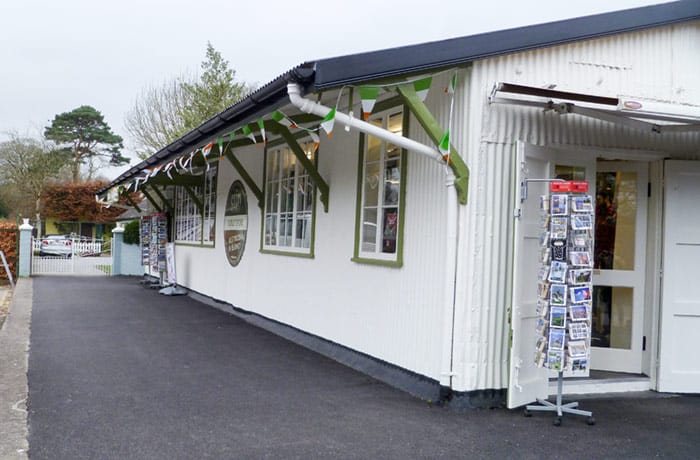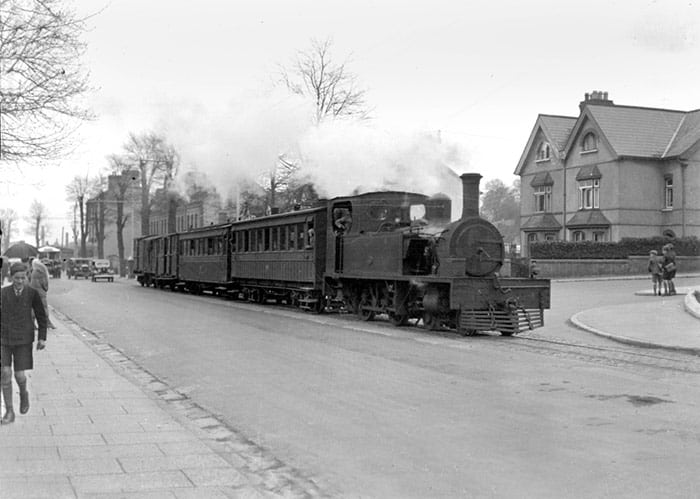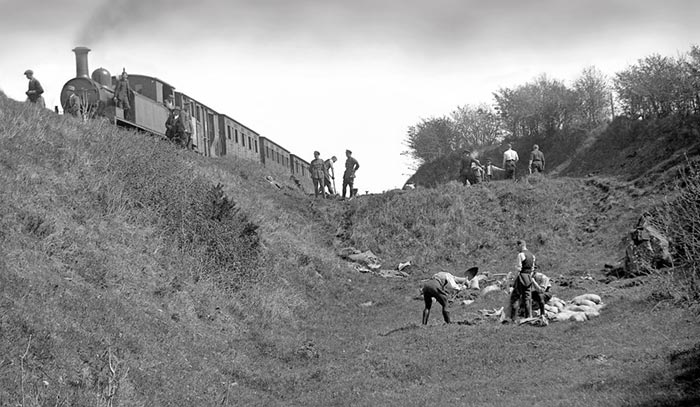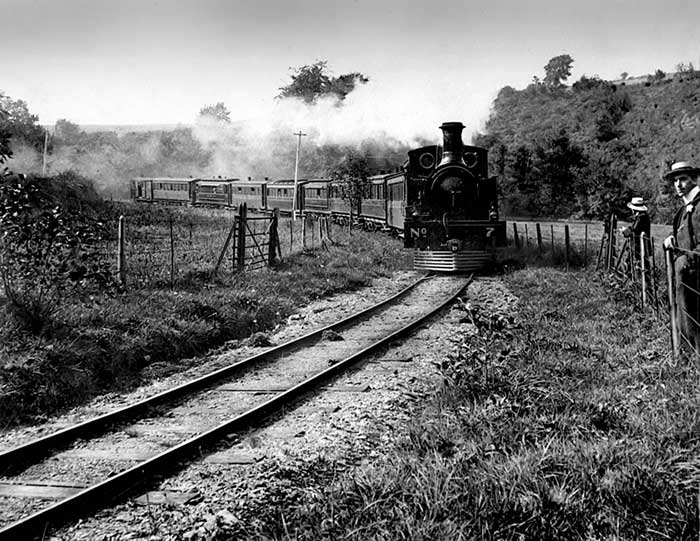Stop 3. Cork and Muskerry Light Railway Line
History
Six Days’ Notice!
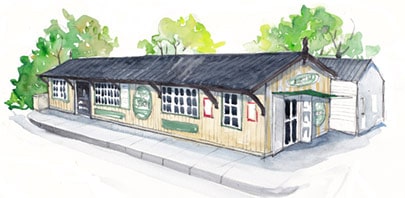
On 2nd August 1887, the people of Cork were given 6 days’ notice via an advertisement, for the opening of the Cork & Muskerry Light Railway Line to Blarney – marketing today is a lot more expansive…and expensive!
And so the ‘Muskerry Tram’ was born, making its maiden journey on 8th August 1887. A year later (8/8/88) and the date would have been a much easier quiz Q&A!
Background: Building Bridges!
Ireland had seen the fall of Parnell and the failure of the Home Rule Bill. The British Government, keen to build bridges (and railways!), offered grants to support the development of small railways into rural areas. For Cork, Blarney already a busy industrial village was the first to get its train, followed by Coachford and finally a third spur went to Donoughmore, creating quite a remarkable system connecting the countryside with Cork city and vice versa.
Train info: Steam Engines & Steam Rollers!
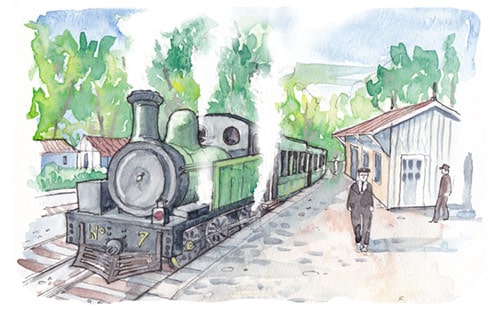
The official name for the ‘Muskerry Tram’ was ‘The Cork and Muskerry Light Railway’. The ‘Light’ referred to the fact that it was a narrower gauge railway track measuring 3 ft wide rather than the normal width of 5 ft 3″. It was a legendary train, very closely connected to the people. Some of the old railway carriages are out around the fields of Coachford being used as hen houses. A restoration job for the not so faint-hearted! The platform which still exists today displays a poster of the day the steam engine ‘Muskerry Tram’ collided with a steam roller. It is said that the drivers were trying to pass each other out…but that could be a load of Blarney!
Turntable: The railway tracks would have run along the road leading from the platform and then came to a dead end! In order to turn the engine around, ready for the return journey, a turntable was used and would have been just over the large green hedge opposite the platform. The Ordnance Survey maps document this also.
A Business ‘Platform’:
The ‘Erin Giftstore’ occupies the site of the station building, and the actual platform still remains, giving a wonderful element of continuity and a physical connection to the Blarney of yesterday. Also located on the platform was the local Blarney Post Office (now ‘The Old Post Office Café’) and original manual Telephone Exchange.
The ‘Muskerry Tram’ gave farmers a market for their milk, butter and eggs and so the platform would have been a very busy place with plenty of steam and puffing! People would be milling around loading goods on and off on the train in a frenzy of hustle and bustle. It was a very good service with six trains a day coming out and six trains a day going back. When you think of today’s world and the constant emphasis on the need for ‘connectivity’ you realise that back in the day, Blarney was very well connected!
Tourism: Branding Blarney!
As well as the obvious trade benefits, the ‘Muskerry Tram’ opened Blarney up to mass tourism for the first time. If you had a railway ticket you got into Blarney Castle for half price! Have we a ticket sample of this? I remember seeing one. Before this, you had to have your own private transport to the Castle, so this opened up the possibility of Sunday excursions for everyone. Blarney (both castle and village) was thriving as a result. It became the go to destination for Sundays with the local hotels, restaurants and pubs doing great trade.
Closure: All good things must come to an end – Really?
The ‘Muskerry Tram’ initially a vital part of the Blarney & Muskerry District, continued up to the 1930s but by then it was losing money hand over fist and the decision was taken to close it. It was a huge loss to Blarney and many would argue that it still is today. There is a lot of nostalgia for steam all over the world but the loss of the railways to rural areas is seen as one of the most detrimental death knells to both domestic and international tourism in Ireland.
Just imagine what things would be like if we had a steam connection between Cork and Blarney today!
Come along now and explore The Square and find out who was hanged there.
Photos
